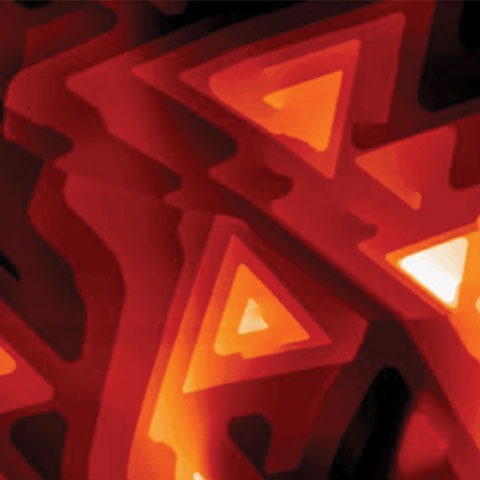Topological Insulator

A close-up of triangular growth spirals found on a topological insulator: Bi2Se3. Scientists used scanning tunneling microscopy to create this image.
Image Credit: Liu et al./APS
August 8, 2013
Discovered in 2007, topological insulators may prove invaluable in the production of future electronics. These materials have insulating innards, meaning that electrons cannot flow very easily through these parts. On the materials' outer surface, however, electrons can move largely unimpeded at incredible speeds (nearing the speed of light) without scattering backward.
These two traits have significant advantages over the typical semiconductors that abound in modern electronics. You'll find semiconductors in LEDs, solar cells and transistors — the heart of modern computers, phones and gadgets. In semiconductors, electrons often meet resistance, leading to reduced current, and impurities can cause electrons to scatter in different directions. But topological insulators would resolve these problems, leading to faster, more powerful electronics.
For the image above, scientists from the University of Wisconsin and the University of York (UK) used a scanning tunneling microscope (STM) to reveal the triangular growth patterns you see in this topological insulator: Bi2Se3. Unlike a typical optical microscope, STMs rely on quantum tunneling to create images based on the interactions between a tiny conducting tip and the sample surface.














